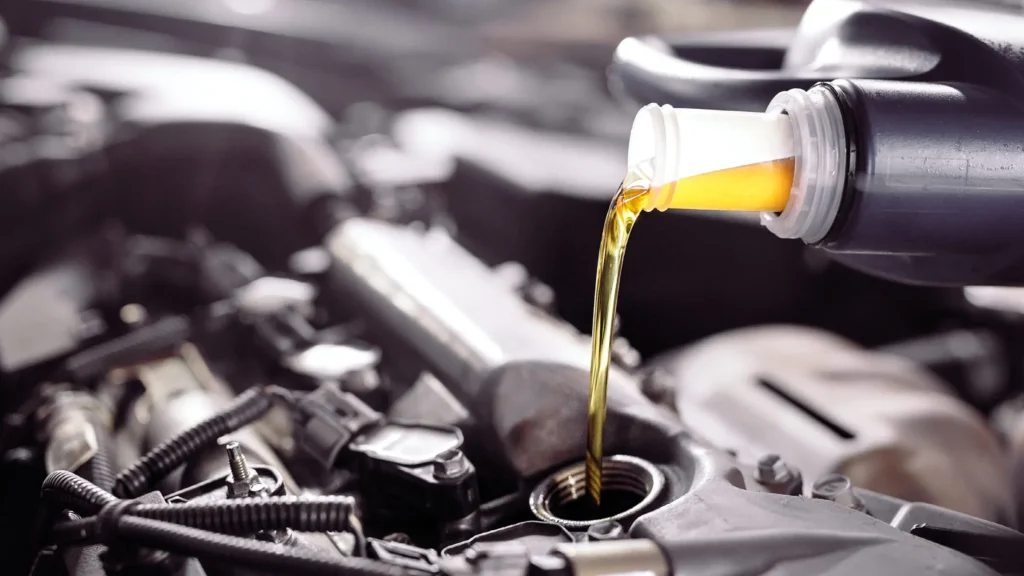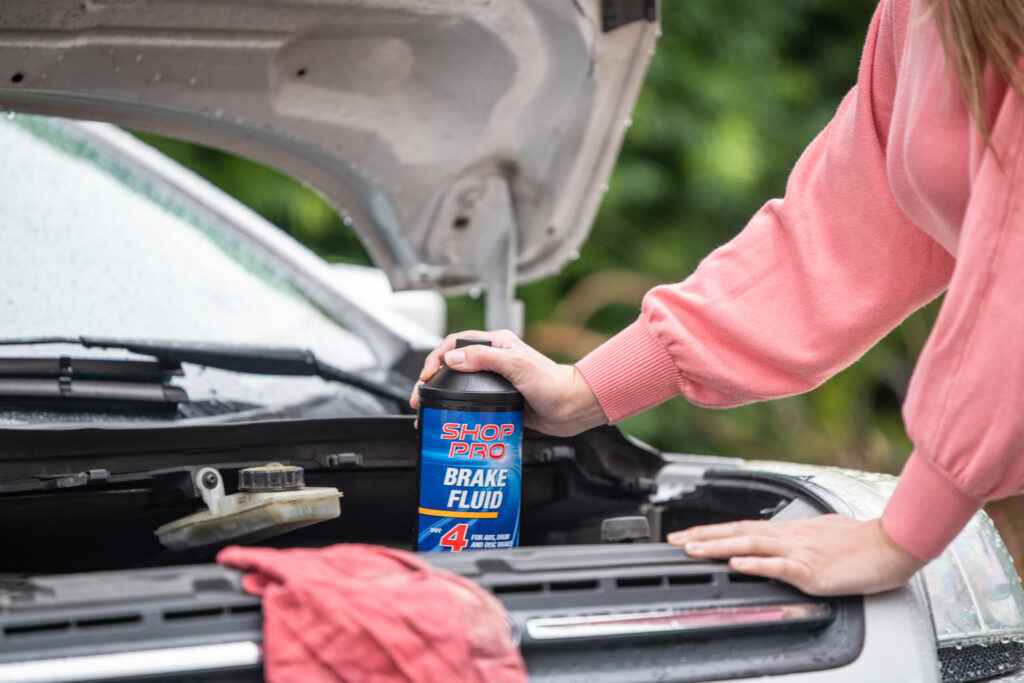Fluid maintenance is a critical aspect of car ownership that is often overlooked. Properly maintaining your car’s essential liquids not only ensures the longevity of your vehicle but also contributes to its overall performance and safety on the road. In this comprehensive guide, we will walk you through the process of checking, changing, and topping up the various fluids that keep your car running smoothly.
Engine Oil: The Lifeblood of Your Vehicle

Engine oil is undoubtedly one of the most vital fluids in your car, as it lubricates the engine’s moving parts, reduces friction, and helps dissipate heat. Regularly checking and changing your engine oil is essential for preserving the health and performance of your engine.
To check your engine oil level, start by parking your car on level ground and allowing the engine to cool down for a few minutes. Then, locate the oil dipstick, usually marked with a bright-colored handle, and pull it out. Wipe the dipstick clean with a rag, reinsert it fully, and then pull it out again to observe the oil level. If the oil level is below the minimum mark, it’s time to top up.
When it comes to changing your engine oil, follow the manufacturer’s recommended intervals outlined in your car’s owner’s manual. Typically, this interval falls between 5,000 to 7,500 miles for conventional oil and up to 15,000 miles for synthetic oil. However, if you frequently engage in stop-and-go traffic or tow heavy loads, you may need to change your oil more frequently.
Coolant: Regulating Your Engine’s Temperature
Coolant, also known as antifreeze, plays a crucial role in regulating your engine’s temperature and preventing it from overheating or freezing in extreme weather conditions. Checking and maintaining the proper coolant level is essential for preventing engine damage and ensuring optimal performance.
To check your coolant level, make sure your engine is cool, then locate the coolant reservoir under the hood. The reservoir is typically translucent with “max” and “min” markings indicating the appropriate level of coolant. If the coolant level is below the minimum mark, carefully add a mixture of coolant and water according to the manufacturer’s specifications.
In addition to checking the coolant level, it’s also important to inspect the condition of the coolant itself. Over time, coolant can become contaminated or lose its effectiveness, necessitating a coolant flush and replacement. This process should be performed according to the manufacturer’s recommended intervals or if you notice any signs of coolant degradation, such as discoloration or a foul odor.
Transmission Fluid: Keeping Your Gears Shifting Smoothly
Transmission fluid is responsible for lubricating the gears and components within your car’s transmission, ensuring smooth shifting and optimal performance. Like engine oil, transmission fluid requires regular inspection and maintenance to prevent costly repairs and premature wear and tear.
Checking your transmission fluid level involves a similar process to checking your engine oil. Start by parking your car on level ground and allowing the engine to cool down. Then, locate the transmission dipstick, which is usually located near the back of the engine bay. Remove the dipstick, wipe it clean, reinsert it fully, and then remove it again to check the fluid level.
If the transmission fluid level is low, it’s crucial to add the appropriate type of transmission fluid specified in your car’s owner’s manual. Avoid overfilling the transmission fluid reservoir, as this can lead to transmission issues and damage. If you notice any signs of fluid leakage or contamination, such as a burnt odor or discolored fluid, it’s essential to have your transmission inspected by a qualified mechanic.
Brake Fluid: Ensuring Safe Stopping Power

Brake fluid is responsible for transmitting the force from the brake pedal to the brakes, allowing you to stop your vehicle safely and effectively. Maintaining the proper level and condition of your brake fluid is essential for ensuring reliable braking performance and preventing brake failure.
To check your brake fluid level, locate the brake fluid reservoir under the hood, usually located near the firewall on the driver’s side. The reservoir is typically translucent, allowing you to see the fluid level inside. If the fluid level is below the minimum mark, carefully add the appropriate type of brake fluid recommended by the manufacturer until it reaches the maximum mark.
In addition to checking the brake fluid level, it’s also crucial to inspect the condition of the fluid itself. Brake fluid can absorb moisture over time, leading to reduced braking performance and potential damage to brake components. If you notice any signs of moisture contamination, such as a cloudy appearance or rust-colored fluid, it’s essential to have your brake system inspected and the fluid flushed and replaced if necessary.
Power Steering Fluid: Smooth Steering Control
Power steering fluid is responsible for assisting you in steering your vehicle with minimal effort, especially at low speeds or when making tight turns. Properly maintaining the level and condition of your power steering fluid is essential for preserving the functionality of your power steering system and ensuring smooth steering control.
To check your power steering fluid level, locate the power steering fluid reservoir under the hood, typically near the engine. The reservoir is usually translucent, allowing you to see the fluid level inside. If the fluid level is below the minimum mark, carefully add the appropriate type of power steering fluid recommended by the manufacturer until it reaches the maximum mark.
In addition to checking the power steering fluid level, it’s essential to inspect the condition of the fluid itself. Over time, power steering fluid can become contaminated or degrade, leading to reduced steering performance and potential damage to the power steering system. If you notice any signs of fluid leakage, discoloration, or a burnt odor, it’s crucial to have your power steering system inspected and the fluid flushed and replaced if necessary.
Understanding Windshield Washer Fluid: Visibility and Safety
Windshield washer fluid is often an overlooked component of a car’s maintenance routine, yet it plays a crucial role in ensuring clear visibility and safety while driving. This fluid is responsible for spraying onto the windshield to remove dirt, debris, and other obstructions that can impair your vision on the road.
Checking and topping up your windshield washer fluid is a straightforward process that can be done quickly and easily at home. Locate the windshield washer fluid reservoir under the hood, typically marked with a windshield icon. Ensure that the fluid level is between the minimum and maximum marks on the reservoir. If the fluid level is low, carefully add windshield washer fluid until it reaches the appropriate level.
In addition to regularly checking the fluid level, it’s essential to inspect the condition of the washer fluid itself. Over time, washer fluid can become contaminated or diluted, reducing its effectiveness in cleaning the windshield. If you notice any signs of discoloration, sedimentation, or a foul odor, it’s time to flush out the old fluid and replace it with fresh washer fluid.
Maintaining a clean and clear windshield is essential for safe driving, especially during inclement weather conditions such as rain, snow, or sleet. Inadequate visibility can increase the risk of accidents and collisions on the road. By regularly checking and topping up your windshield washer fluid, you can ensure optimal visibility and safety for yourself and other motorists on the road.
Understanding Differential Fluid: Smooth and Efficient Power Distribution
The differential is a critical component of your car’s drivetrain system, responsible for transferring power from the engine to the wheels while allowing them to rotate at different speeds. Differential fluid, also known as gear oil, lubricates the gears and bearings within the differential, ensuring smooth operation and efficient power distribution.
Checking and changing your differential fluid is an essential aspect of vehicle maintenance, especially for vehicles equipped with rear-wheel or all-wheel drive systems. Over time, differential fluid can become contaminated with metal shavings, dirt, and other debris, leading to increased friction, heat, and wear on the differential components.
To check your differential fluid level, locate the differential housing, usually located on the rear axle for rear-wheel drive vehicles or on the front or rear axle for all-wheel drive vehicles. Remove the fill plug and inspect the fluid level, ensuring that it reaches the bottom of the fill hole. If the fluid level is low, carefully add the appropriate type of differential fluid recommended by the manufacturer until it reaches the proper level.
In addition to checking the fluid level, it’s essential to inspect the condition of the differential fluid itself. If you notice any signs of contamination, such as a milky appearance or metallic particles, it’s crucial to have your differential inspected and the fluid flushed and replaced if necessary. Properly maintaining your differential fluid ensures smooth and efficient power distribution, prolonging the life of your differential and drivetrain components.
Understanding Battery Electrolyte: Powering Your Electrical System

The battery electrolyte is a critical component of your car’s electrical system, responsible for providing the necessary power to start the engine, operate electronic components, and maintain a stable voltage supply. Understanding the importance of battery electrolytes and how to properly maintain it is essential for ensuring reliable vehicle operation and preventing unexpected breakdowns.
Checking the electrolyte level in your car’s battery is a straightforward process that can be done with a hydrometer or by visually inspecting the battery cells. Ensure that the electrolyte level is above the plates inside the battery cells but below the maximum fill line indicated on the battery casing. If the electrolyte level is low, carefully add distilled water to each cell until it reaches the appropriate level.
In addition to checking the electrolyte level, it’s essential to inspect the condition of the battery terminals and cables for any signs of corrosion or damage. Corrosion buildup can impede the flow of electricity and lead to starting problems or electrical malfunctions. Clean the battery terminals and cables with a wire brush and terminal cleaner solution to ensure good electrical conductivity.
Properly maintaining the electrolyte level and condition of your car’s battery is crucial for ensuring reliable starting performance and electrical system operation. Regularly checking and topping up the electrolyte level, cleaning the battery terminals, and inspecting for signs of corrosion will help prolong the life of your battery and prevent unexpected breakdowns on the road.
Conclusion
Regularly checking, changing, and topping up your car’s essential fluids and components is vital for ensuring the longevity, performance, and safety of your vehicle. By understanding the importance of each fluid and component, as well as how to properly maintain them, you can keep your car running smoothly on the road for years to come. Remember, proactive maintenance is key to preventing costly repairs and ensuring a stress-free driving experience.


